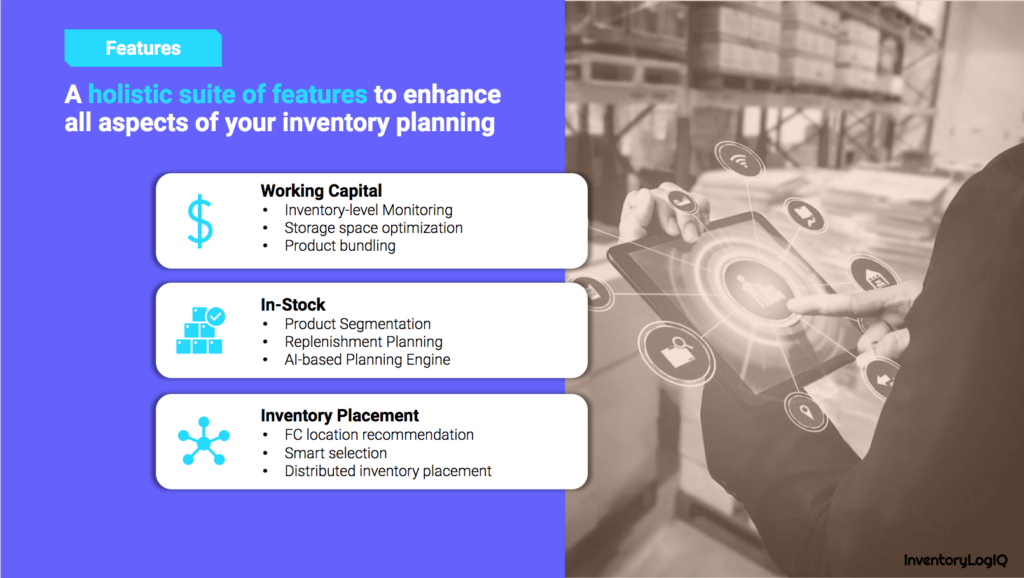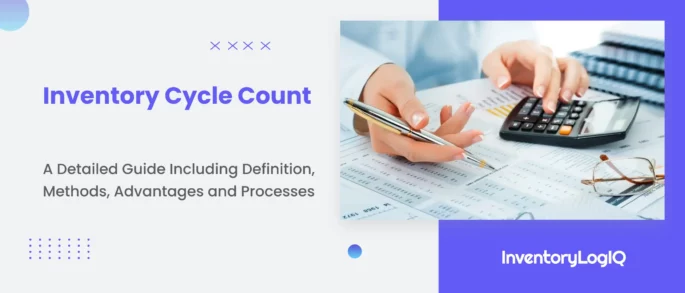Inventory Position: Definition, Importance and 3 Ways To Position Your Inventory In 2023
To be a successful eCommerce company, you need to ensure that your inventory is optimized in every way, be it in management, tracking, or storage. Inventory is the key sellable component of your business so it needs to be taken care of. The way inventory is stored and organized can have a huge impact on the speed of fulfilling orders. It is key for businesses to focus on attaining a productive inventory position. The inventory position is important for businesses because it can affect the company’s ability to meet customer demand, as well as its costs and overall profitability.
A business with a large inventory position may have higher inventory carrying costs, such as storage and insurance expenses, but it may also be better able to fulfill customer orders without delays. On the other hand, a company with a small inventory position may have lower carrying costs, but it may be at risk of stockouts or other disruptions to its operations. We will take a closer look at the meaning of inventory position, its importance and the methods used to do it.
What is Inventory Position?
Definition
The word inventory position refers to where and how inventory is housed on storage racks, as well as where inventory units are stored throughout the supply chain such as in stores, warehouses, and production lines. When inventory placement is optimized, SLAs for order fulfillment are satisfied while logistics and inventory costs are kept low. Whether it is in-plant, regional, or field warehouses, inventory positioning refers to the strategic placement of distinct commodities in the product line. Because inventory positioning affects facility decisions, it must be taken into account in the logistics plan.
eCommerce organizations can enhance warehouse efficiency and fulfillment speed by utilizing the correct inventory placement strategy to know where to put their goods so that orders are delivered on time and without errors. Inventory position in operations management may also be used to determine the overall amount of inventory possessed by a store in the context of inventory accounting. To calculate inventory position, use the following formula:
Inventory Position = (On-Order Inventory + On-Hand Inventory) – Backorders
Goal
The need for inventory arises for sellers who want to sell and deliver products to customers within the stipulated time. Companies must understand that they need inventory to sell. Businesses cannot request finished products from a manufacturer after a customer has already placed an order. Keeping inventory enables retailers to instantly fulfill orders.
[contactus_gynoveda]
Importance of Inventory Position in Operations Management
Your operational efficiency, operating expenses, and capacity to please consumers are all affected by where and how you store your goods, both in terms of storage and in your supply chain. Physically situating your products to be easy to discover and easily accessible at the warehouse level makes selecting easier, which increases the overall fulfillment speed. It also reduces the chances of current goods being misplaced or forgotten, resulting in less wastage and reduced average inventory holding costs.
On a supply chain level, having an inventory position in operations management that reduces lead times allows you to better fulfill consumer demand. You can prevent stockouts that anger clients and, instead, enhance their overall experience by making sure that your product is available in the locations and channels you need it to be. Some of the major ways in which Inventory position is important are as follows:
- Inventory positioning provides safety stocks that are retained to offset any changes in demand and supply, thus preventing stock-outs.
- Inventory positioning improves customer service standards by supporting the marketing department’s function, i.e., if demand is generated, inventory must be available and accessible to meet it.
- Unit costs are at their lowest when production is done in extended runs with consistent volumes that are provided by inventory positioning.
- Inventory positioning provides for purchase and transportation economies based on the inference that lot sizes lower purchase and transportation expenses.
- Inventory positioning helps in hedging against price fluctuations. This aspect reduces the impact of supplier price increases during times of high inflation.
- Inventory position in operations management mitigates demand and lead time uncertainty. Logistical problems are unpredictable and proper planning should be done to counter them.
- Proper inventory positioning leads to effective inventory planning against unplanned contingencies that might disrupt operations, such as labour disputes, fires, floods, and other natural disasters.
3 Ways to Position Your Inventory in 2023
Ensure Easy Reachability of High-Volume Products
Having a proper inventory position entails that the products which are utilized the most and are likely to be in demand should be stored in a way that is easily accessible so that they can quickly be identified, picked, packaged, and shipped. This allows firms to speed up order fulfillment for products that have the best chance of being sold.
This method can be followed for other products in order of their demand and sales volumes during prior seasons, with the highest selling items kept in a more accessible location and lower selling items stored in more hard-to-reach places, to make the best use of the available storage space. Doing this infers that goods are organized in a specific way and on the rare occasions that lower-demand products are ordered, employees will instantly know where they are by aligning the demand of that product with a specific placement in the warehouse.
Forecast Demand for Proper Inventory Planning
Estimation of demand based on historical patterns or particular events is quite imperative to stock positioning. If an incorrect estimation of upcoming demand occurs, then even with high stock availability, there can be shortages and delays in delivery, which can cause an inadequate customer experience. On the other hand, inaccurate estimation of demand can also cause an inventory surplus, leading to significantly higher storage and operational costs, which can have a negative impact on the profit margins of a business.
Many businesses often tend to base their stock replenishment strategy on forecasting done historically, hoping the pattern would repeat. Ideally, it should be taken with a grain of salt as markets are dynamic and forecasting should be done keeping the current factors in mind. Demands go through cyclical trends and various unforeseen events also affect it, so every factor should be thoroughly analyzed in order to achieve the required level of inventory. Therefore, inventory analysis is a must.
Suggested Read: What is the Benefit of Inventory Forecasting?
Store Larger SKUs on Lower Shelves for Easy Accessibility
Having your heaviest or least-movable Stock Keeping Units at the top or rear of your warehouse racks makes no sense for various reasons. They should not be placed on shelves where they are difficult to gain access to. The sheer weight of them can also cause the shelves to lose their structural integrity and succumb to the pressure caused by large objects that they were not designed for.
Ideally, they should be kept as near to the ground as possible so that getting to them isn’t a safety issue or an overtly challenging task. Simultaneously, modify positioning for bulky SKUs based on their popularity. Make sure they’re stored in a convenient position if they are frequently ordered. However, the general rule for large items is that they are stored in a convenient location and as close to a transit bay as possible so that they can be dispatched with minimal effort.
Conclusion: How Can InventoryLogIQ Help to Position Your Inventory in 2023?
Although inventory position is difficult to perfect, it is crucial to provide a positive customer experience. Overall, effective inventory management is crucial for businesses to maintain a healthy inventory position and maximize profitability. By using inventory management software, inventory forecasting techniques and other strategies, businesses can avoid the costly consequences of over- or understocking and keep their inventory position at an optimal level.
A dedicated inventory management solution like InventoryLogIQ can help a company’s warehousing practice and ensure professionalism in safely and securely storing and positioning products in the warehouse and can coordinate the delivery of your items and inventory to our facilities, where our team will store your items and handle all of the technical aspects of managing and organizing them.

InventoryLogIQ can intelligently suggest the placement of products across our vast network of fulfillment centers, based on areas of high customer demand or proximity to transit facilities. Depending on the product, each SKU will have its own storage location, such as on a shelf, in a container, or on a pallet, based on the demand and nature of the product. Our warehouses are equipped with advanced facilities such as a custom OMS to monitor your inventory, automating processes such as picking products when an order is confirmed, placing inventory based on the type of product, and much more.
The features offered by InventoryLogIQ make inventory management and placement a breeze, are mentioned below:
- Custom OMS that tracks Inventory levels across multiple warehouses in real-time.
- Automatic reorder point alerts to help you keep track of when you need to restock.
- Enhanced demand forecasting capabilities to help you determine the appropriate stock you need for each product type.
- Intelligent inventory placement that suggests which fulfillment center would be the best option to fulfill orders based on customer demand, geographical locations, etc.
All these processes can help in inventory optimization and improve inventory position and can drastically improve efficiency and cost-effectiveness in all your warehousing and order fulfillment processes.








